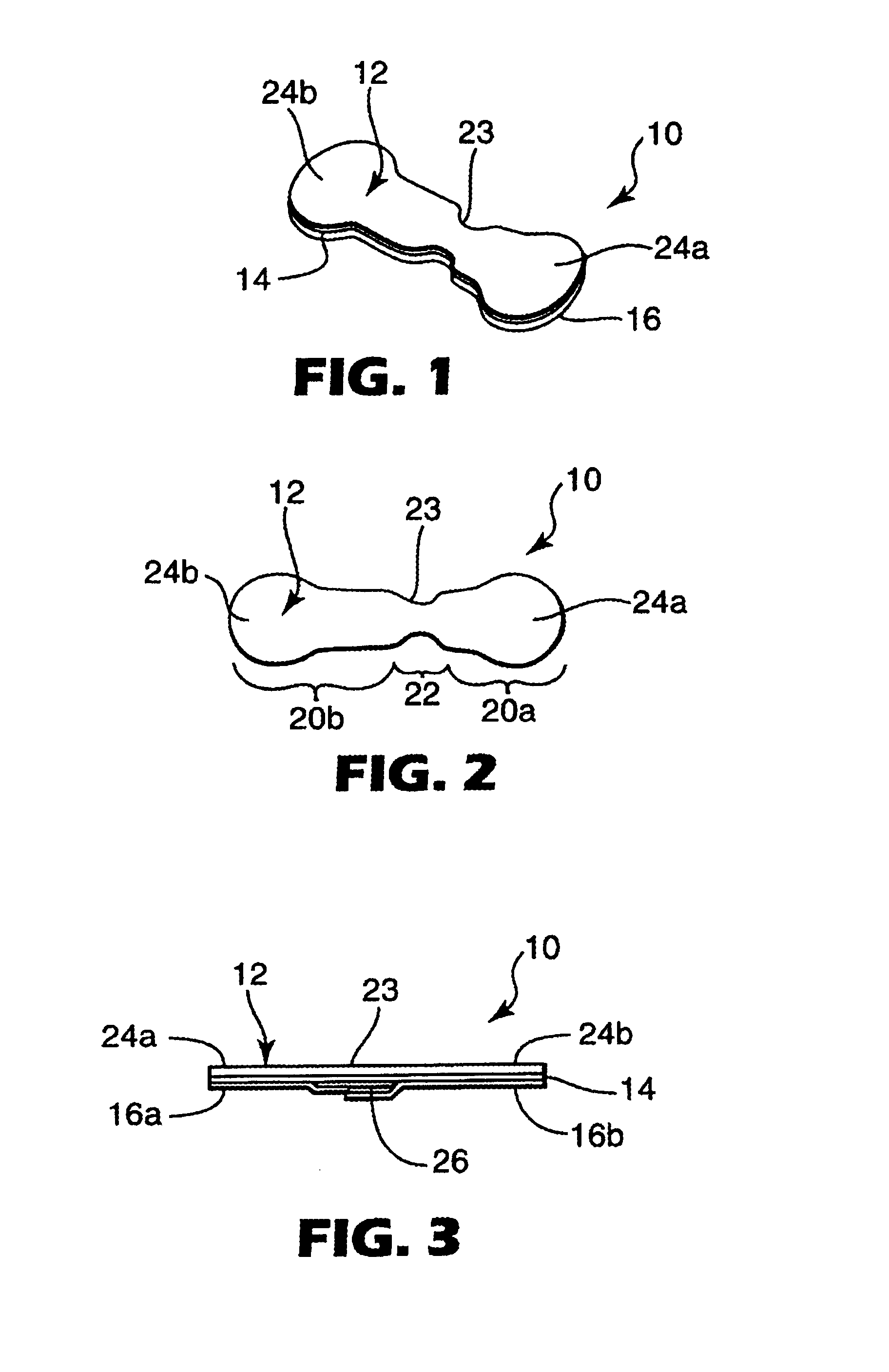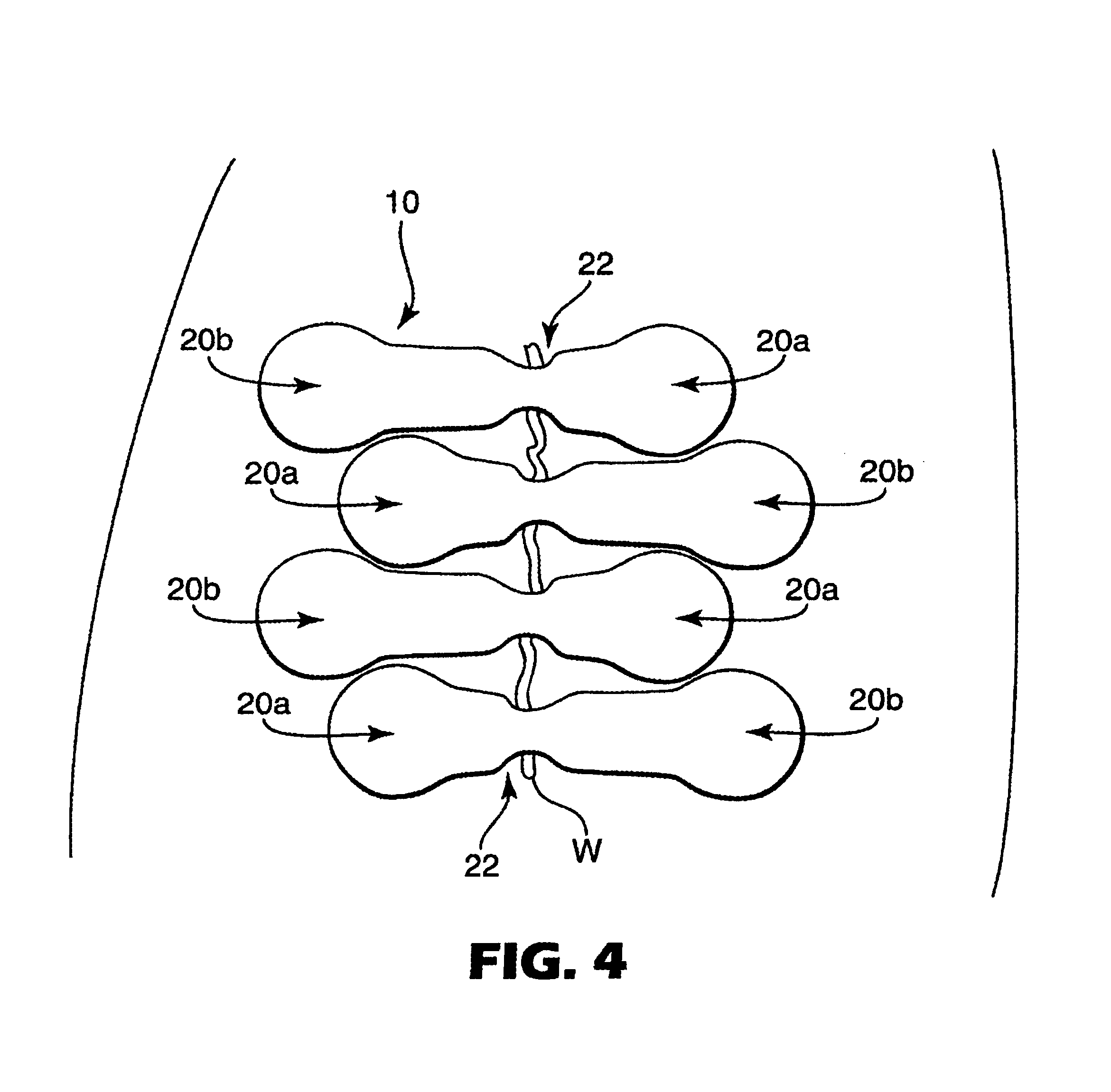Conformable adhesive wound closures
a technology of adhesive wound closure and conformable adhesive, which is applied in the field of adhesive wound closure, can solve the problems of difficult to obtain good long-term adhesion adjacent to a joint, cuts to the face over the bony ridge, and difficult to treat with existing products, so as to achieve sufficient dimensional stability and improve the conformability and adhesion of the wound closur
- Summary
- Abstract
- Description
- Claims
- Application Information
AI Technical Summary
Benefits of technology
Problems solved by technology
Method used
Image
Examples
example 1
[0048]A backing of blown microfiber web including 3-layer fibers containing 80% polyurethane and 20% “KRATON” PSA / polyethylene blend was laminated to blown microfiber polyacrylate PSA web using the materials and methods described Example 3 of U.S. Pat. No. 6,107,219 (Joseph et al.). A 12.5 mm (0.5 inch) wide strip of Melinex™ S polyester terephthalate film, 36 microns (0.00142 inch) thick (available from DuPont, Wilmington, Del.) was laminated to the polyacrylate PSA web.
[0049]A wound closure having an overall length of 57.2 mm (2.25 inch) was die cut from the adhesive composite web thus formed. The wound closure was shaped generally as depicted in the figures, except that the opposing end portions of the wound closure were of equal lengths as measured from the wound bridging portion. The main width of the wound closure was 8 mm, expanding at the ends into pad portions of generally circular shape having a diameter of 12.5 mm (0.5 inch). A neck portion was present within the area con...
example 2
[0050]The wound closure according to Example 1 was tested for elongation, adhesion, and recovery after stretch. The wound closure was adhered to a very stretchable and recoverable test substrate which was stretched to force the wound closure to elongate by 30%. Film to be used as the test substrate was made according to the first two paragraphs of Example 1 of U.S. Pat. No. 5,531,855 (Heinecke et al.), which is hereby incorporated by reference in its entirety.
[0051]A strip of the test substrate material was attached to two handles so as to leave an unstretched 70 mm span of test substrate between the handles. The wound closure was adhered to the test substrate using its own adhesive layer to the plain side of the test substrate with the long axis of the wound closure aligned with the direction of pull between the handles.
[0052]Over the course of approximately two seconds, the handles were pulled sufficiently to force the wound closure to extend to 74.4 mm (30% elongation) in length....
PUM
 Login to View More
Login to View More Abstract
Description
Claims
Application Information
 Login to View More
Login to View More - R&D
- Intellectual Property
- Life Sciences
- Materials
- Tech Scout
- Unparalleled Data Quality
- Higher Quality Content
- 60% Fewer Hallucinations
Browse by: Latest US Patents, China's latest patents, Technical Efficacy Thesaurus, Application Domain, Technology Topic, Popular Technical Reports.
© 2025 PatSnap. All rights reserved.Legal|Privacy policy|Modern Slavery Act Transparency Statement|Sitemap|About US| Contact US: help@patsnap.com



